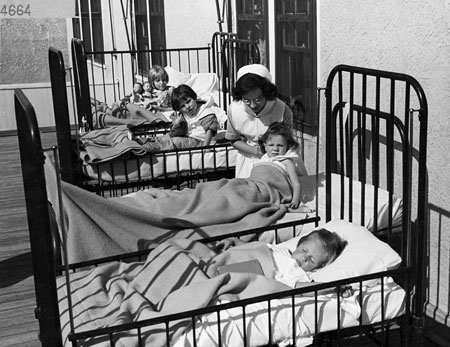Polio kind of eased into the public consciousness in the summer of 1959 in Newfoundland. We were aware of it, but it didn’t dominate our lives. It broke out that year in Trinity Bay in a small group of connected families that had not been vaccinated with the Salk vaccine. That was in June and by July polio, also known as infantile paralysis, had made its way into Conception Bay and then a first appearance in St. John’s.
DISEASE OF DIRT & POVERTY
I remember my parents stopped us from playing in Victoria Park that summer. There was a dirty slimy river running through that park. The river left Mundy Pond and went underground to appear again at the top of Victoria Park. It oozed down through the heart of the park to disappear again through a culvert and went on to the Waterford River. The river through Victoria smelled. It was filthy. Stuff grew in its water. Who knows what emptied into it before it made its way down from Mundy Pond?
RELATED: JIM FURLONG Looking for the Light The Sounds of Yesterday Hail to the Experts
It didn’t take a doctor to tell us to stay away from it. Mothers took care of that. My mom said, incorrectly, that polio was a disease of dirt and poverty. She said the same thing about tuberculosis. That’s the way mothers were in those days. By the way, authorities thought that Shea Heights and Mundy Pond might be hard hit areas in St. John’s because they weren’t on the main water supply of the city. Authorities were wrong. It was the crowded little streets in the centre of the city that became a “cluster” of polio infections.
THE OUTBREAK CURVE
Sometime in August the decision was made to keep schools from re-opening in September. The movie theatres stayed open, although swimming pools closed. That’s the part I remember most. An extra month of vacation because of polio. To little boys like me that outweighed any public health concern. In September the number of polio cases dropped significantly. The outbreak curve was “flattened” as we say in the world of the current Coronavirus. By October we were back in school and polio had ceased to be a scourge upon the land.
I had one friend that contracted poliomyelitis. He wasn’t permanently affected. He awoke one morning and couldn’t walk. He was sent to the Fever Hospital down by the penitentiary. Eventually he recovered. His only strong memory is of his mom picking him up when he was discharged and the food in the hospital being more varied than home. He was a lucky little boy. The total number of people stricken in 1959 was 137; almost all of them children. There were twelve deaths that summer. This year in particular, I remember it.

6 thoughts on “Jim Furlong: That Other Epidemic”